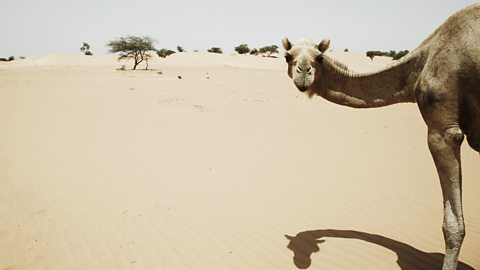Conditions and animal adaptions
How animals survive in the desert
Desert iguana

Derest iguanas change to a lighter colour as the day gets hotter. This reflects more light and stops them overheating.
The desert iguana can stand hotter temperatures than other lizards, remaining active in up to 46Âş C.
It changes colour to regulate body temperature. It is darkest in the morning to absorb more heat from the sun, and turns nearly pure white by early afternoon to reflect sunlight. The desert iguana also has a nasal salt-secreting gland that allows it to void salty body waste while conserving water.
How animals adapt to extremely arid conditions
Camels
- large, flat feet - to spread their weight on the sand
- thick fur on the top of the body for shade, and thin fur elsewhere to allow easy heat loss
- a large surface area to volume ratio - to maximise heat loss
- the ability to go for a long time without water - they lose very little water through urination and perspiration
- the ability to tolerate body temperatures up to 42°C
- slit-like nostrils and two rows of eyelashes - to help keep out sand

Camels are adapted to life in a hot and dry climate